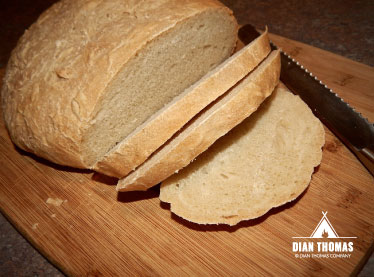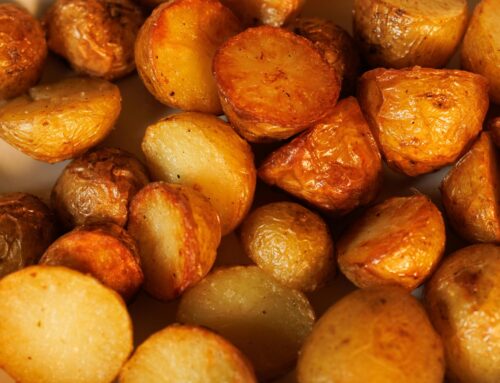Now that the weather is warming and spring is here it time to starting thinking about camping trip and all the delicious thing that go with those memorable trips. My dad was the best at sourdough bread. Anyone that knew him talked about the best dough, whether it was made into pancake, biscuit or bread. I wanted to share with you his recipes, but this week we’ll start with the sourdough starter.
Delicious sourdough bread — always a favorite and a winner out-of-doors — was the principal bread of the hardworking men and women who built the West. You, too, can enjoy its heartiness and flavor. Once you begin, you’ll likely always want to use sourdough for baking.
In pioneer days, sourdough was developed from a culture of flour, water and wild yeast. Wild yeast is atmospheric bacteria, similar to that used for souring milk or making cottage cheese.
After the “starter” has been mixed into the dough, the cook always keeps part of it out so it can activate new dough; that’s why it is called the “starter.” Today, it’s easy to make a starter with flour, sugar, yeast and water.
About Containers
The most common sourdough container for camp or home use is a 1- to 2-gallon earthenware crock with a loose-fitting lid. Plastic or glass containers with loose-fitting lids or plastic wrap work equally well. Acids from the bacterial action of the dough react on metal; thus metal containers are not recommended.
It is essential that the lid or cover be loose or unsealed, because the contents might explode if gas cannot expand and escape.
Making Sourdough Starter
Your homemade starter will work just as well as one that has been passed down through generations. Some families pride themselves on its length of time in use, and many even give their starter a name.
- 1 cup all-purpose flour
- 1/2 tablespoon dry yeast
- 1 teaspoon sugar
- 1.5 cups warm water
In a crock or plastic container, combine flour, yeast, sugar and warm water. Leave at room temperature for 3 days, adding 1 cup of new flour and 1/2 cup warm water each day until batter is active. You can tell the batter is active because the odor is pungent and the surface is bubbly. This occurs from the gas released by the action of the yeast.
At this point your starter is ready to form the basis of sourdough recipes. Remember to set aside 1 to 2 cups of starter for the next batch. The amount of dough you mix will depend on the number of bread loaves or biscuits desired.
Maintaining Sourdough Starter
To maintain the starter, use the dough frequently. The starter will keep for several days and even weeks by refrigerating or freezing between uses. When making a new batch of bread or pancakes, bring the starter to room temperature a day or so before using and let it reactivate in a warm (not hot) temperature.
To shorten rising time, mix the dough with warm water and keep it in a warm place. To lengthen rising time, mix the dough with cold water and keep it in a cool place until you plan to use it.
In outdoor camping areas during cold periods, the dough can be mixed with warm water and covered with insulation such as coats or bedding to “wake it up.” During warm weather, mix it with cold water and store in a cool place so it will not become too active.
When the dough becomes sourer, it will not make a good finished product and should be discarded, except for a small amount to activate a new starter. Adding cultured yeast helps to renew the starter. When you begin to mix the dough, the bowl should be less than half full because it will more than double in size and may overflow the container.





